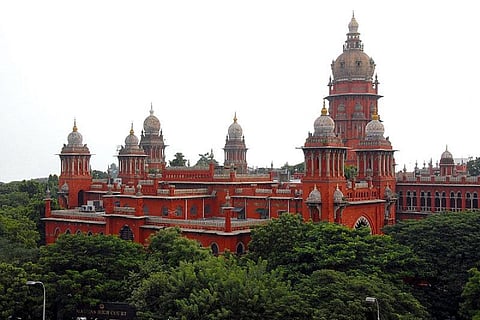

The Madras High Court has said that temples constructed as per the agama shastras are exempted from the Tamil Nadu government’s appointment of priests, but the government can appoint priests from any caste at all other temples in the state. The HC has said that archakas/poojaris can continue to dispense their duties at agama temples without government intervention.
The division bench of Chief Justice Munishwar Nath Bhandari and Justice N Mala said that it is now to be seen how many temples in Tamil Nadu fall under the categorisation of agama. Agama shastra refers to certain instructions or a manual of the rituals or way of worship under Hinduism. The books categorised as ‘agamas’ explain in detail how a temple is to be constructed, installation of the idols, the rituals to be followed, and so on.
The High Court said that the committee will study which temples follow the agama shastra and that agama temples will be exempted from the provisions of the Tamil Nadu Hindu Religious Institutions Employees (Conditions of Service) Rules, 2020 which talk about the necessary qualifications of the temple priests.
The court was hearing a batch of pleas, including one by All India Adi Saiva Sivacharyargal Seva Sangam, which said that the 2020 rules introduced by the government mentions the qualifications necessary to be appointed to the post of archaka/poojari (priest).
The plea said that as per the rules, those who have learned mantras and poojas in a gurukulam and have gained three years experience would be made ineligible if they do not possess the required qualifications mandated in the rules, thereby “destroying and wiping out the prevailing customs given in the agamas.”
There are 28 agamas relating to the Saiva temples, the Madras High Court noted, the most important of them being the Kamikagama, the Karanagama and the Suprabedagama.
The HC cited previous decisions of the Supreme Court, where it had held that the government’s powers to govern temples should not interfere with the customs and rituals of the temples. “...it has been elaborately given out that as per the texts of the Vaikhanasa Shastra (agama), persons who are the followers of the four Rishi traditions of Bhrigu, Atri, Marichi and Kasyapa and born of Vaikhanasa parents are alone competent to do puja in Vaikhanasa temples of Vaishnavites. They only can touch the idols and perform the ceremonies and rituals. None others, however, high placed in society as pontiffs or Acharyas, or even other Brahmins could touch the idol, do puja or even enter the Garbha Griha,” the court said.
The court added that if the appointment of archaka or poojari is not made as per the agamas, the “individual would be at liberty to challenge it,” but added that the appointment of archaka would be made by the trustees or a fit person and not by the HR&CE Department. However, this will apply only to agama temples.
The High Court ordered a committee to identify all the temples constructed under agamas. The committee will be headed by Justice M Chockalingam, former judge of the Madras High Court, and will also comprise N Gopalaswami, head of the Madras Sanskrit College's Executive Committee. The committee will identify the temple or group of temples which were constructed as per agamas and, while doing it, they would further identify under which agama the said temple was constructed.